 It’s that time of year. Second semester is in full swing. The hope of snow days is waning. And for high school teachers in Michigan, this time of year also means that assessment season is quickly approaching.
It’s that time of year. Second semester is in full swing. The hope of snow days is waning. And for high school teachers in Michigan, this time of year also means that assessment season is quickly approaching.
We, as teachers, often struggle with how to best prepare our students for high-stakes assessments like the SAT. No one likes to teach to the test, but we also recognize its importance both for our schools and for our students, and we want to see our students achieve success. So, how do we find that balance?
To answer that question, I’ve come back to a favorite resource of mine, Simon Sinek’s “golden circle.” In this TED talk, Sinek argues that, in order to inspire change, we must “start with ‘why.’” To prepare my students for success on the SAT, I’m starting by rooting my practice in “why.”
As a teacher, questions are our job. In this case, I’d argue that “why” is the one that we should return to with consistency–both in planning and in instruction.
Here are a few questions that I’m trying to integrate into my daily instruction.
1. Why do you say that?
In daily instruction, this question can inform me and help guide my instruction. If students have an answer, but it sounds like they might not quite have the understanding that they need, I’ll ask this question. It illuminates their thinking and identifies where I need to redirect.
If they are on the right track, this question can extend thinking to the next level of supporting analysis with evidence. This type of question even appears on the SAT.
2. Why might this author…?
You could finish this question in a lot of different ways:
Why might this author include these details?
… use this particular word?
… start her essay like this?
… structure her paragraphs in this way?
… write this in the first place?
These questions help to make that ever-important connection between reading and writing. And they help to make a habit of analysis, which is a crucial skill on the redesigned SAT both in multiple choice and essay sections.
3. Why are we doing this?
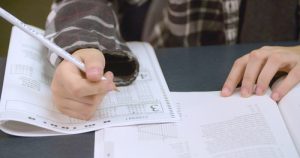 We’ve heard this question a million times from our students, and it’s an important one. If our purpose is to more authentically teach students to write by studying the craft of mentors, then we should make sure our texts and our writing are aligned, and that we are asking these questions when it makes sense to do so.
We’ve heard this question a million times from our students, and it’s an important one. If our purpose is to more authentically teach students to write by studying the craft of mentors, then we should make sure our texts and our writing are aligned, and that we are asking these questions when it makes sense to do so.
There’s a very real human element to the craft of writing, and we can’t forget that. Here, we’re asking “why” with the lens of what we, as writers, can learn from these mentors.
The same question can be asked of test prep. If you teach juniors, you might be especially frustrated this time of year that your unit work gets eclipsed by frequent practice tests. Again, it would be worth asking, “Why are we doing this?”
The biggest advantage to giving practice exams (and I’m talking full-test- or whole-section replicas of the test) is to expose students to the format, the wording, and the nuances that come with different tests. Yes, of course this is important, but it shouldn’t trump good instruction.
If the goal is to practice a format, wouldn’t that be most effective within our good instruction in manageable chunks? Or by assessing in a variety of formats–including those that will give our kids exposure to the wording and format? If we’re replacing a lot of our valuable class time with practice tests or are letting them drive our curriculum, we should step back and re-ask ourselves “why?”
Rooting our practice in “why” through planning and instruction can help us make the necessary shift from surface-level understanding to purposeful, thoughtful analysis. And if this is done throughout the year and beyond just the typical “test-prep” time of year, it can shape our students in ways far more meaningful than just preparing for a score.
 Megan Kortlandt (@megankortlandt) is a secondary ELA consultant and reading specialist for the Waterford School District. In the mornings, she teaches Language Arts at Durant High School, and in the afternoons, she works with all of Waterford’s middle and high school teachers and students in the Curriculum, Instruction, and Assessment department. Additionally, Megan works with Oakland Schools as an instructional coach for AARI. She has presented at various conferences including the Michigan Council for Teachers of English and Michigan Reading Association annual conferences
Megan Kortlandt (@megankortlandt) is a secondary ELA consultant and reading specialist for the Waterford School District. In the mornings, she teaches Language Arts at Durant High School, and in the afternoons, she works with all of Waterford’s middle and high school teachers and students in the Curriculum, Instruction, and Assessment department. Additionally, Megan works with Oakland Schools as an instructional coach for AARI. She has presented at various conferences including the Michigan Council for Teachers of English and Michigan Reading Association annual conferences

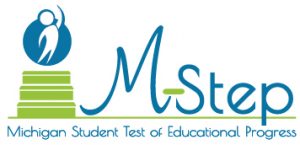 With test prep season beginning and the M-STEP looming, teachers can become frustrated because there are not many
With test prep season beginning and the M-STEP looming, teachers can become frustrated because there are not many 
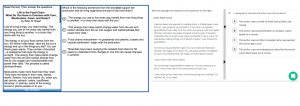

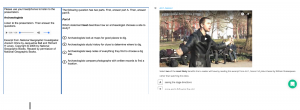
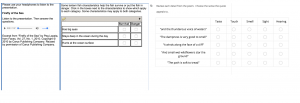
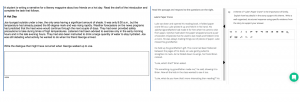
 Jianna Taylor (
Jianna Taylor ( Recently, I facilitated a webinar about preparing students for the ELA M-STEP. (You can access a
Recently, I facilitated a webinar about preparing students for the ELA M-STEP. (You can access a 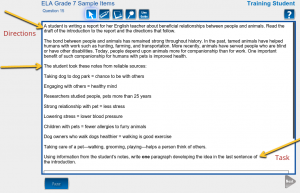

 As I write this, January is nearly over and we are starting to hear a little buzz about our state’s standardized testing. This buzz will likely turn to a loud roar as we get closer to April. In many districts, this testing is like a heavy weight that sits on the shoulders of students and teachers alike. Though I am blessed to work in a district that does not pressure us at all, I too feel the weight.
As I write this, January is nearly over and we are starting to hear a little buzz about our state’s standardized testing. This buzz will likely turn to a loud roar as we get closer to April. In many districts, this testing is like a heavy weight that sits on the shoulders of students and teachers alike. Though I am blessed to work in a district that does not pressure us at all, I too feel the weight. A colleague got me thinking about metaphors for all of this. The one that comes to mind for me is that we need to get students’ feet in the water, to ease them in before we throw them in alone and ask them to swim.
A colleague got me thinking about metaphors for all of this. The one that comes to mind for me is that we need to get students’ feet in the water, to ease them in before we throw them in alone and ask them to swim. Beth Rogers is a fifth grade teacher for
Beth Rogers is a fifth grade teacher for